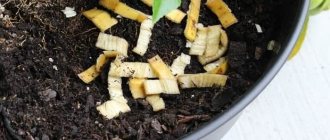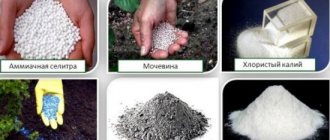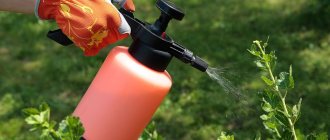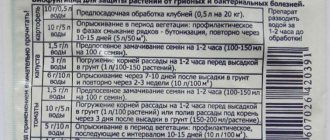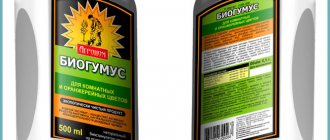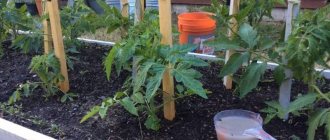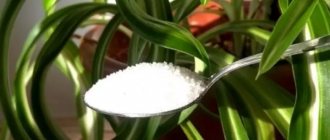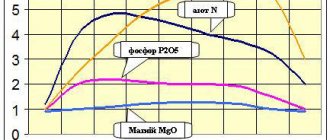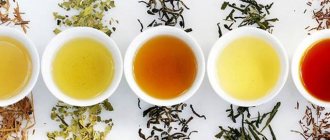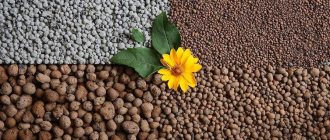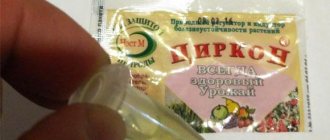What are the benefits of banana peels for plants?
Banana peel, as a fertilizer for flowers, has confirmed its effectiveness, judging by the reviews of summer residents and flower growers.
For professional cultivation of seedlings in greenhouses, balanced chemical complexes of organic and mineral substances are used. At home, it is practiced to fertilize seedlings and indoor flowers with fertilizers made from natural products.
Composition of microelements in banana peels:
| Item name | Benefits for plants |
| Potassium | strengthens the plant’s immunity to diseases, compacts the stem structure. |
| Phosphorus | promotes budding and the appearance of numerous ovaries on vegetables, increases the frost resistance of plants. |
| Magnesium | participates in the processes of photosynthesis and stimulates it in poor sunlight. |
| Sodium | promotes rapid rooting during transplantation and strengthens the root system of plants. |
| Nitrogen | increases the volume of green mass of plants, stimulates the development of young shoots. |
There is a minimal amount of nitrogen in the peel that supports the plant, but prevents it from growing and throwing out flowers. To extend the flowering period of houseplants, you need to perform at least 2 fertilizing with banana fertilizer. A large amount of potassium and phosphorus in the peel will support flowering and prolong its time.
Banana peel for flowers infused in water
The fertilizer is equally effective when fed “by the leaf” or when applied at the root. For example, for violets (Saintpaulias) it is not advisable to spray; in this case, it is advisable to introduce fertilizer from a tray or through a wick. Flower growers often use this technique in the summer.
Disadvantages of banana feeding
Banana peel as a fertilizer for flowers is not capable of harming plants, but it must be used, like all fertilizers, according to the rules.
Disadvantages of using banana peel based nutritional formulas:
- Bananas, during long transportation from producing countries, are treated with aggressive chemical compounds. Before using the product, it must be thoroughly washed with a brush under hot water so that the protective layer on the surface of the fruit does not harm the ecosystem of indoor flowers and vegetables.
- Banana peel has a specific sweet aroma, which turns into a ready-made fertilizer for flowers and vegetables. Its aroma attracts ants and small midges, which harm the plant.
- If you bury a banana peel under the root of a plant and do not completely cover it with soil, rotting processes will begin on its surface with the formation of mold, which can damage the base of the stem and the root of the plant.
- Even though the entire set of useful microelements and organic acids is available, their quantity will not be enough when using only this type of fertilizer.
Experienced gardeners alternate feeding with banana peels and “green manure”, which is rich in nitrogen. However, this method is not suitable for home use, since “green fertilizer” has a specific smell of humus.
During the growing period of bananas, they are often stimulated with growth hormones, some of these substances are stored in the peel. Therefore, the use of banana fertilizer is more effective for young, growing flowers and seedlings. Mature plants may react negatively to hormones.
Reviews from gardeners
Tatiana
Banana peels make excellent flower food. The fruit remedy is rich in many microelements that indoor plants require. I water the soil in small doses so as not to harm the flowers, so the nutrient acts on them unobtrusively, moderately.
Of course, there are disadvantages to using such fertilizer. Midges and flies flock to the sweet suspension. The presence of chemicals on banana peels can harm the flowers. The product will not be able to provide the plant with all the necessary components, which means that it will have to be fed additionally. Therefore, before use, you should think about the pros and cons of the fertilizer and whether it is advisable to use it.
Svetlana
Usually in winter I start saving banana skins, cut them up, then put them in the freezer. In the spring, when I transplant seedlings, I bury a piece of peel in each pot. A little later the result appears, the weak shoots grow stronger and begin to grow lush foliage. At the same time, the banana remains rot in 10 days, thanks to soil microorganisms.
For which indoor and garden plants is banana peel fertilizer suitable?
Banana peel as a fertilizer for flowers is considered a universal nutritional option. However, experienced flower growers and gardeners advise using it to strengthen seedlings or after the first picking, when young seedlings are stressed.
Flowering plants react more favorably to fertilization with banana peels:
- Saintpaulia (violets);
- gloxinia;
- begonias;
- anemones;
- streptocarpus (relatives of violets with large bell-shaped flowers);
- calceolaria;
- azaleas;
- pelargonium.
For decorative deciduous indoor flowers, the amount of nitrogen in this type of fertilizer is not enough. It can be combined with fertilizing with urea, which will provide the required amount of nitrogen. With this combination, the green mass of plants will become juicy and bright.
This product is also suitable for feeding vegetable seedlings (tomatoes, peppers, eggplants, cucumbers), which are sown in seedling boxes in the spring. Watering should be carried out after the appearance of 2 true leaves on the vegetable seedling.
Methods for preparing fertilizers and instructions for their use
Banana peel fertilizer can be prepared in a variety of ways. However, the properties of such mixtures differ and have their own limited time frame for use.
Roasted skin powder
This type of fertilizer is applied to the soil in dry form. Preparation of the product will take some time and is advisable when used on a small number of plants.
Cooking method:
- The banana must be thoroughly washed with hot water and the peel removed.
- The peel needs to be wiped dry and spread on a baking sheet.
- The oven needs to be preheated to 180°C and a baking sheet with the peel placed in it (it can be pre-chopped into fragments of 2 - 4 cm).
- You need to keep it in the oven until the banana peel is completely dry (it will turn black and shrink in size).
- After drying, the fragments should be ground in a coffee grinder and stored in a glass container with a tightly closed lid.
This fertilizer is used to enrich the soil. It is scattered in a thin layer under the plant and the soil is loosened. It is recommended to mix it with soil mixture when transplanting plants or picking seedlings.
Compost
The easiest way to use banana peels is used by summer residents who have special compost pits. They throw 10-20 pieces there in early spring. skins and use humus to fertilize the land in the fall.
Infusion for flowers
The use of infusion for watering house plants is considered the most optimal option, which preserves most of the organic compounds in the peel. The disadvantage of this fertilizer is the short shelf life of the product (about 5-7 days). Therefore, the infusion is prepared from 2-3 skins per week of use.
How to prepare banana peel infusion:
- Clean and dried skins must be cut in half and placed in the bottom of a clean liter jar.
- The raw materials must be filled with water at room temperature to the top of the jar. Close it and leave in a dark, warm place for 2-3 days.
- Before watering, the mixture must be diluted with water in a 1:1 ratio.
The liquid in the jar will become cloudy and take on a sweet banana smell. Fermentation may occur (depending on the temperature at which infusion is carried out). It is recommended to water the plants with infusion 2 times a week.
Mixture of soil + banana peel
To prepare the fertilizer you will need a lot of time and a large (10 liter) bucket that closes tightly.
You can also make a compost mixture for home use:
- Clean and dry banana skins should be cut into 3-5 cm pieces.
- In a 10 liter bucket you need to collect rich black soil and mix it with 5-10 skins.
- It is recommended to pour 100 g of Baikal on top of the mixture and, tightly closing the lid, leave for 3-6 weeks in a warm place (the temperature should be more than 18 ° C).
- Then the procedure must be repeated: reintroduce the peel and “Baikal” into the bucket. Leave to ferment for another 5 weeks. After this period, the compost is ready.
The mixture is added to pots of indoor plants and mixed while loosening. The use of compost is especially effective when replanting plants, then it is added to the soil composition.
When composing the mixture, it must be taken into account that excess fresh compost can damage the root system of plants. It is added in proportions of 1:3 (1 part compost and 3 parts soil).
Tropical cocktail
This type of feeding refers to complex mixtures that require a long preparation process.
To create fertilizer you will need:
- banana peel – 8 – 10 pcs.;
- water – 1 tbsp.;
- sugar – 250 g;
- dry yeast – 0.5 tsp;
Place the peel and bulk ingredients in a glass jar with a capacity of 1 liter, then pour a glass of filtered warm water on top. The jar needs to be closed with a lid and fermented in a warm place for 7 days. Then you need to strain the solution through two layers of gauze and leave to infuse in a dark place for 2 months.
After fermentation is complete, you will get a strong nutritional concentrate. For watering it needs to be diluted with water 1:10, and for foliar feeding 1:20. After the end of the fermentation cycle, the jar must be stored in the refrigerator.
Foliar feeding
Foliar feeding is popular among gardeners. This allows you to moisten the leaf surface and deliver microelements directly to the green mass of the plant. For this type of fertilizer, the concentration of the solution must be very weak so as not to damage the leaf blade.
What is the leaf nutrient mixture prepared from:
- banana peel – 3 pcs.;
- egg shells – 3 pcs.;
- magnesium sulfate – 20 g;
- water – 1.5 l.
Before preparing the mixture, you need to prepare the eggshells: rinse with soda and dry.
Cooking process:
- Banana peels need to be pureed using a blender, and eggshells can be ground with a coffee grinder.
- You need to put the mixture in a glass container (1 l) and pour magnesium sulfate into it.
- Fill the jar with filtered water to the top of the container, close the lid and shake.
The solution will be ready for use after 3 hours. This is a concentrate that needs to be diluted for leaf feeding in a ratio of 1:2. Before preparing the working solution, the liquid must be filtered through cheesecloth. It is recommended to store the jar of concentrate in the refrigerator. Foliar watering should be done by spraying liquid once a week.
Banana decoction
When preparing such a fertilizer, the amino acids will be destroyed as a result of heat treatment, but the vitamins and microelements will be included in the decoction. The boiling process will destroy all pathogens, which will allow the broth to be stored in the refrigerator for a long time.
To prepare, boil 3-4 banana peels in 1 liter of water for 10 minutes. Then the liquid must be cooled and strained through cheesecloth. This will be a mother solution (concentrate), which must be diluted in half with water before watering. It must be stored in the refrigerator.
Banana and citrus mixture
Other fruits – oranges, lemons – are also growth stimulants.
For example, to create a cocktail of tropical fruits for repeated use when watering, you need:
- banana peel – 3 pcs.;
- orange peel – 3 pcs.;
- sugar – 1 tbsp;
- water – 3 l.
To prepare the fertilizer, you will need a glass jar with a capacity of 3 liters that closes tightly. Preparation time – 1 month.
Cooking process:
- At the bottom of a clean jar (it is recommended to wash it with baking soda, rather than using household chemicals), you need to place fruit peels.
- It is necessary to pour filtered water into the jar and dissolve the sugar in it, stirring.
- Then you need to close the jar with a lid and put it in a dark but warm place for 1 month.
- After the expiration date, the liquid must be filtered through 3 layers of gauze. It is a concentrate that must be dissolved 1:10, then start watering.
It is recommended to store the jar of solution in the refrigerator and dilute it with warm water before watering. Water the plants once every 14 days.
Nourishing Green Tea & Banana Blend
Green tea contains trace elements and tannins that stimulate the development of the root system of flowers and seedlings. The combination of nutritional amino acids from banana and tannins from green tea allows you to create an effective fertilizer for any season.
For irrigation, decoctions of tea and banana peels are used (the process of preparing the decoction is described above in the article). You need to brew 2 tbsp. green tea without impurities in 300 ml of water. The tea needs to be steeped for 2 - 3 hours and strained from the brew.
In a glass container you need to mix 1:1 tea and a decoction of banana peels - this is a concentrate that must be diluted 1:1 with water before watering.
Nettle and banana mixture
To prepare the fertilizer, you will need to combine 2 infusions: from banana peel (the preparation method is described above in the article) and nettle. To prepare the infusion, pharmaceutical herbs in packages are suitable.
In a 500 ml container, pour boiling water over the nettle raw material, cover with a lid and leave for 24 hours. Then the liquid must be filtered and mixed with banana infusion. Fertilizer should be stored in the refrigerator.
It is recommended to water indoor plants once every 2 weeks. To do this, you need to mix 100 ml of infusion with 300 ml of filtered water. You can use it to water “sheet by sheet”, but then you need to dilute the mother liquor in 500 ml of water.
Mixture of banana and grape branches
Banana peel is high in nutrients, and grape branches contain a range of vitamins and microelements. In order not to destroy the beneficial properties by heat treatment, flower growers recommend enriching the soil with a dry mixture of grapevine and banana peel before planting or replanting indoor flowers.
Dry grape branches for preparing fertilizer
The nutrient mixture is combined with the substrate (2 tablespoons of the mixture are used per 3 liter pot) and poured into a flowerpot or seedling glass. Dry grape branches need to be crushed in a coffee grinder and combined with banana peel powder (1:1). The fertilizer should be stored in a dry place, wrapped in craft paper.
Banana peel as a remedy for aphids
Banana peel can be used to prevent aphid infestation and can be used for small numbers of pests as a natural insecticide:
- A small amount of skin is buried in the top layer of soil - this will repel insects.
- You can use an infusion prepared from the peel of one banana and 1 liter of cold water. The mixture is infused for a day, and then filtered, diluted with the same amount of water and used to spray infected flowers. At the same time, the infusion will serve as a foliar feeding.
You can spray only those flowers that do not have pubescence on the leaves. In particular, this method will not work for violets and gloxinias.
When fertilizing with banana peels, reviews are positive when the fertilizer is applied correctly. You should not apply it more often than 1-2 times a month. Fresh skin should be embedded in the soil; it should not be left on the surface of the soil. When used wisely, feeding banana peels invariably brings benefits to plants.
Precautionary measures
Banana peel fertilizer has a high nutritional activity, so you should not use it frequently. Each type of feeding has its own time intervals. If you add a lot of nutrients at once, this can lead to accelerated development of green mass or root system, which the plant cannot cope with and may die.
All fertilizing with banana fertilizers should be alternated with watering with filtered water. The application of other organic or mineral fertilizers during this period is not recommended.
Before preparing fertilizer according to any of the recipes, you should thoroughly rinse the banana peel under running water. For these purposes, use soft brushes, such as a toothbrush.
All liquids containing banana peels consist of a large amount of proteins; to avoid rotting and fermentation, solutions must be stored in the refrigerator. But you should not use chilled fertilizers for applying to flower pots. They must be diluted with warm, clean water to bring the overall temperature of the solution to room temperature.
Nutrient fertilizers with banana peel are suitable for both indoor flowers and seedlings. You can buy bananas in supermarkets all year round, so solutions can be prepared for young seedlings of cucumbers and tomatoes, peppers and eggplants in early spring. Flowers always respond to fertilizing with lush and long-lasting blooms, regardless of the season.
Answers to frequently asked questions
When is it more beneficial to use banana tincture for indoor plants?
It is better to apply fertilizer in the spring, since after winter, even weakened indoor plants will benefit from additional strength.
Can banana skins be frozen?
Yes. Freezing will help prepare fertilizer for future use. Store the product in the freezer until use.
Is it necessary to wash the skins of the fruit?
Yes. It is advisable to wash the banana peel thoroughly so that the chemicals remaining on it do not reach the soil of the plant.
